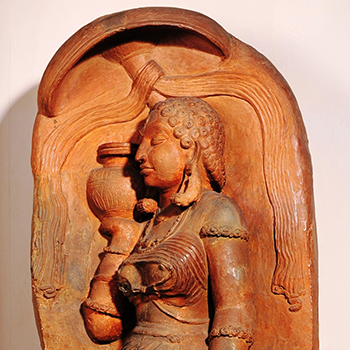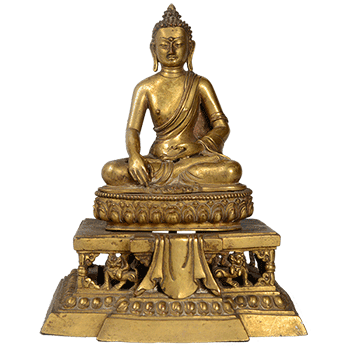This intricately sculpted piece made from black stone depicts King Narasimha I seated on a swing. The sculpture has its origin in Konarak, Odisha and dates back to 13th century CE.
It is currently on display in the Late Medieval Gallery at the National Museum, New Delhi.

































